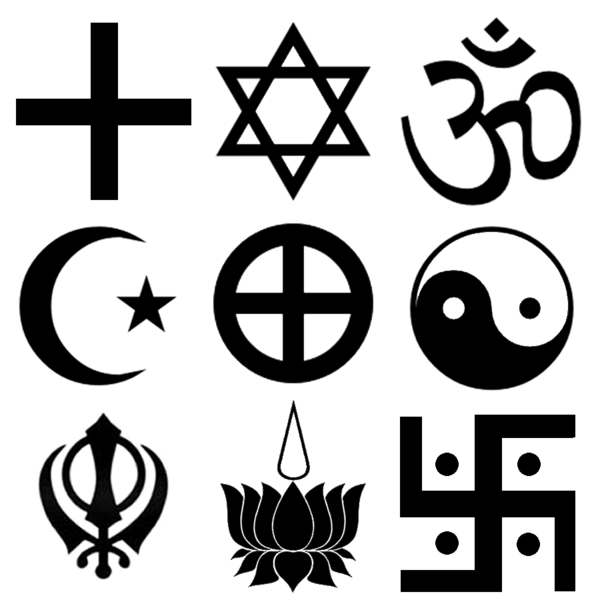Lebanon, a small yet historically significant country nestled at the crossroads of Western Asia, boasts a rich tapestry of religious diversity. It serves as an intriguing lens through which to examine the broader multifaceted landscape of faith within the Middle East. Understanding the religious composition of Lebanon offers profound insights into the complexities of identity, culture, and spirituality in a region that has often been marred by conflict and misunderstanding.
At the heart of Lebanon’s religious identity lies Christianity, which has deep roots that date back to the nascent days of the faith. Lebanon is home to a significant Christian population, comprised primarily of Maronites, Orthodox, and Catholic communities. The Maronite Church, an Eastern Christian denomination, plays a particularly pivotal role, having aligned historically with the Catholic Church while preserving unique traditions and liturgical practices. This relationship illustrates the intricate interplay between local customs and broader historical currents that have shaped Christianity throughout the centuries.
Beyond the Maronites, various Orthodox sects enrich the Christian presence. The Greek Orthodox Church, for instance, accounts for a substantial portion of the Lebanese Christian community. Its adherence to ancient rites and theological tenets connects its followers to a profound lineage, providing a sense of continuity in an ever-evolving world. This diversity within Christianity underscores Lebanon’s role as a bastion of faith where divergent traditions coexist, catalyzing a vibrant religious dialogue.
However, Christianity in Lebanon does not operate in a vacuum. The country is also notable for its significant Muslim population, predominantly consisting of Sunni and Shia sects. This demographic reality creates a dynamic interplay between the two faiths, resulting in both cooperation and tension. For instance, during the civil war that devastated Lebanon from 1975 to 1990, sectarian divisions were exacerbated, leading to a fractious relationship between the Christian and Muslim communities. Yet, today, efforts to bridge gaps and foster mutual respect abound, illuminating a hopeful narrative of reconciliation.
When one delves into the religious fabric of Lebanon, it becomes evident that the state’s political structure reflects this multifaceted diversity. The Lebanese National Pact, formulated in 1943, was a conscious attempt to maintain a delicate balance of power among Lebanon’s various religious groups. This agreement established a confessional system whereby political offices are allocated according to religious affiliation. Such a framework, while aimed at promoting inclusivity, can lead to challenges, fostering an environment where sectarianism can thrive and complicating national unity.
Christianity’s historical prominence in Lebanon has also bequeathed a plethora of cultural legacies. Architectural marvels such as ancient churches, monasteries in the mountains, and cultural festivals perpetuate this heritage, offering a visual testament to the enduring presence of Christianity within the Lebanese landscape. However, the erosion of Christian demographics in recent decades raises pressing questions about the future of this cultural tapestry. Emigration driven by political and economic instability has begun to thin the ranks of Christian communities, potentially jeopardizing this rich heritage.
From a Christian perspective, the story of Lebanon and its religious diversity serves as a powerful reminder of the gospel’s expansive reach. The New Testament’s call for unity amidst diversity resonates notably in this context. The Apostle Paul’s letters encourage believers to embrace their differences as part of the body of Christ—each member essential for the whole to thrive. Therefore, the coexistence of various religious identities in Lebanon can be perceived as a tangible expression of this biblical principle, illustrating a microcosm of God’s desire for humanity to engage in love and fellowship across dividing lines.
Furthermore, the intersection of faith and social justice assumes a pivotal role within Lebanon’s contemporary landscape. Christian groups have often been at the forefront of humanitarian efforts, providing support to communities affected by crises, regardless of religious affiliation. This underscores a profound aspect of Christian doctrine—service to others, exemplified by Christ’s ministry. Through such acts, the church can play a transformative role in nurturing peace, promoting dialogue, and fostering understanding among Lebanon’s diverse population. This mission is critical, especially in a region where sectarian violence has marred the landscape, leaving scars that require healing through empathy and collective action.
The potent question emerges: are religious identities inherently divisive or can they serve as conduits for unity? In the case of Lebanon, while the challenges posed by sectarian divides are palpable, they also provide an opportunity for Christians and other faiths to deeply engage with one another’s traditions, narratives, and philosophies. Initiatives focused on interfaith dialogue have gained traction, showcasing how different religious backgrounds can come together to contribute positively to society.
As observers reflect on Lebanon’s intricate religious mosaic, the state’s significance extends beyond mere numbers and denominations. It epitomizes the rich potential for diversity to foster understanding and spiritual growth. The Christian community, alongside other religious groups, emerges as co-creators in a shared narrative, crafting a new vision for the future shaped by resilience and hope.
In conclusion, examining the religious landscape of Lebanon presents not only a study of demographics but also a profound exploration of faith’s potential to transcend division. The vibrant interplay between Christianity and Islam may serve as a harbinger of a renewed understanding that embraces the diversities of the Middle East. For Lebanon, the path forward should be one illuminated by shared values, mutual respect, and a commitment to fostering an inclusive society, testing the very essence of what it means to be a community united by faith.



